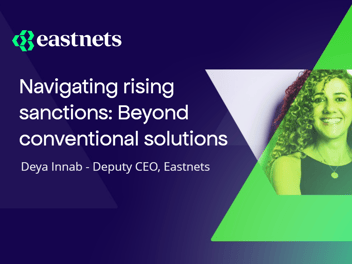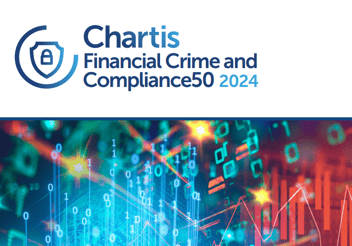Financial crime is growing exponentially in cost and complexity
Fraud currently costs an astonishing $5.38 trillion globallyi. And while the scale of money laundering is hard to assess, the United Nations Office on Drugs and Crime (UNODC) suggests that between 2 and 5 percent of global GDP is laundered each year. That’s between $811 billion and $2.12 trillionii. The numbers are eye-watering.
It seems criminals are always one step ahead, innovating and evolving their strategies to get past financial institutions and regulators. Among all this, there’s one clear factor that’s driving criminality: technology. Or, more accurately, the law-breaker’s ability to use it to their advantage.
We need to beat the fraudsters at their own game and harness the power of some of the world’s most powerful technologies in the battle to secure our wealth and protect our economies, societies and environment from harmful activity. In doing so, there are three tools that can make an enormous difference.
Artificial Intelligence
Going far beyond traditional human or software-based fraud detection, highly sophisticated AI models can identify anomalous behaviour at a previously unimaginable scale in real-time. It doesn’t just stop fraud in its tracks, it can predict fraudulent transactions and suspicious customer behaviour before it happens. This is vital when real-time payments are growing at such paceiii.
It is so accurate that it can reduce false positives. This is hugely beneficial, because cutting out the ‘noise’ of potential, but not proven fraud, frees valuable compliance time for staff to focus on the genuine issues.
When financial crime is so sophisticated, and payment speed is increasing, AI and machine learning are the only way financial institutions can make sense of the huge volumes of data they need to process and analyse. However, there is one key factor in its success: transparency.
Some forms of AI are tasked with spotting fraud, creating risk scores for transactions, and then presenting that to analysts to make a judgement. But the way in which they create the risk score is hidden and often far from the way a human might approach the same task. This is known at ‘black box’ AI. A goal is set, and the AI finds the best way to solve it but cannot show its workings.
In fraud prevention, this isn’t acceptable. This is people’s money we’re dealing with, and regulators need to know how financial institutions are coming to their conclusions. Therefore, AI needs to show how it generated the results – and “explainable AI” is a necessary requirement for transparency and auditability.
Link Analysis
Link Analysis is less well known than AI but is something many of us will recognise if explained in plain language. Imagine watching your favourite crime drama. Inevitably, at some point, a detective will be shown in front of a pinboard with images on it. Red string criss-crosses the board from pin to pin, linking evidence, people and activities. This is Link Analysis in its simplest form.
Now consider software undertaking this same process, finding matches in data for known patterns of interest, anomalies where known patterns are violated, or discovering new patterns of interest. This can be presented in a graphical network visualisation, showing previously hidden connections across millions of disparate nodes of data. It provides context to suspicious transactions and offers recommendations for action.
We couldn’t do the same manually evaluating a huge data set. The technique is another way of linking the power of AI and machine learning with human ingenuity, allowing both to work together in the fight against fraud.
Blockchain
Blockchain in this context is a meaningful innovation with tangible uses and impact because anti-money laundering techniques rely on keeping on top of sanction and watch lists from regulatory bodies. Doing so manually, or with limited automation, is prone to delays and human error.
Blockchain can solve this by using distributed-ledger technology to eliminate these risks. The information is distributed and drawn upon to complete watchlist updates automatically and in real-time.
As soon as a country, individual, or entity is added or deleted from a watchlist, updates can securely flow from the ledger to financial institutions. Because the system is secure, decentralised, and lightning-fast, it ensures screening software is always using the latest information, offering the highest level of protection.
As pointed out earlier, these technologies are tools that can be harnessed to any end. And one thing is certain. If the criminals are using them, the financial industry has a duty to take note and harness their power to fight back, cut fraud, reduce money laundering and turn the tide of financial crime.
Because we cannot allow another year to pass where the fraud rates grow, and even more is lost to criminality. Now’s the time to act and these are the technologies we need.
About the Author
Saeed Patel is Group Director at Eastnets, the compliance, payment, and fraud protection experts, explaining which cutting-edge technologies are vital in the fight against financial crime.
For more than 35 years, we’ve kept the world safe and secure from financial crime. Now we’re creating a safer future for everyone — by ensuring peace of mind today.
Check the original article, here.





